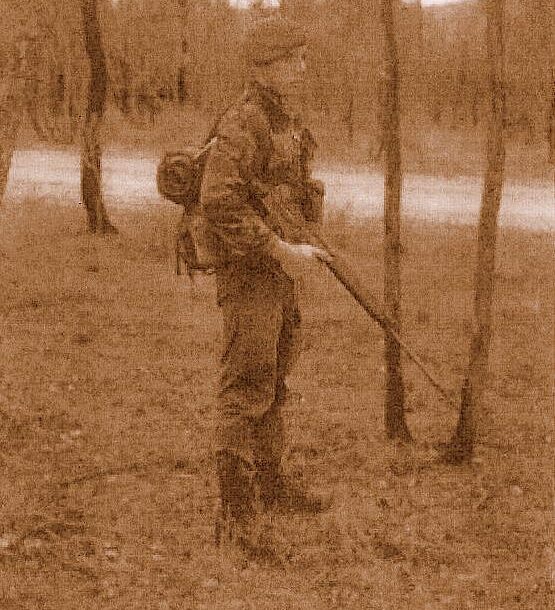Documented Chronology:
(not everything is included)
12 Jan – 24 Jul 87: Julian’s training period as an Officer Cadet in the Australian Regular Army
13 Jan – 2 Jul 87: Julian trains as an Officer Cadet at the Royal Military College, Duntroon in 3rd Class with Kokoda Company
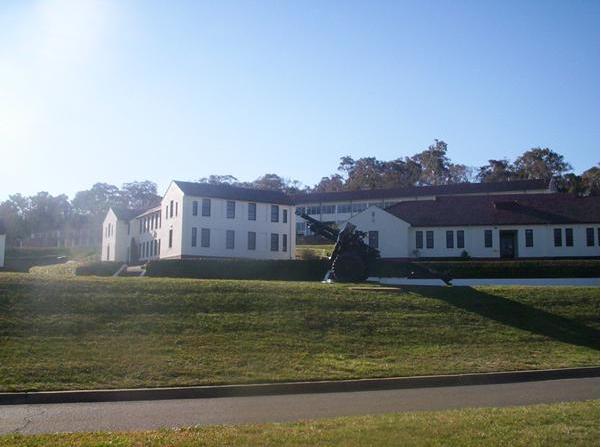
4 Mar 87: Julian turns 19-years-old. He is one of the youngest 3rd Class recruits at RMC.
Apr 87: Julian purchases a second-hand Holden Torana SLR5000 (V8) sedan (below) from finance of a $6,000 car loan from the Defence Force Credit Union
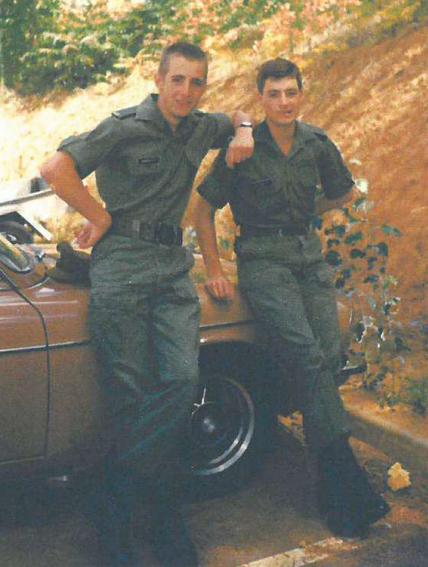
18 May 87: Julian is informed that his natural mother is living in the Republic of South Africa and has not responded to a letter from his Social Worker
31 May 87: Julian stabs his Company Sergeant Major in the Private Bin nightclub in Canberra, and is arrested and charged by the Australian Federal Police
3 Jun 87: Royal Military College’s Board of Studies convenes and formally decides that Staff Cadet Julian Knight should be asked to “Show Cause” why his appointment as a Staff Cadet should not be terminated, effectively ending his career as an Army Officer
12 Jun 87: Julian appears before a Magistrate in the ACT Magistrate’s Court on charges of malicious wounding, assault occasioning actual bodily harm and assault relating to the stabbing on the 31 May 1987, and is bailed on a $5,000 self-surety to appear again on the 10 November 1987 [Case No: CC3792/87]
19 Jun 87: Julian resigns from his appointment as a Staff Cadet at the Royal Military College, and from the Australian Regular Army, in a letter to the Chief of the General Staff
13 Jul 87: Julian completes his discharge procedure at Watsonia Army Base, Melbourne (currently called Simpson Barracks)
24 Jul 87: Julian is discharged in absentia from the Australian Regular Army.
SOURCE: http://julianknight-hoddlestreet.ca/ [2013-2017]
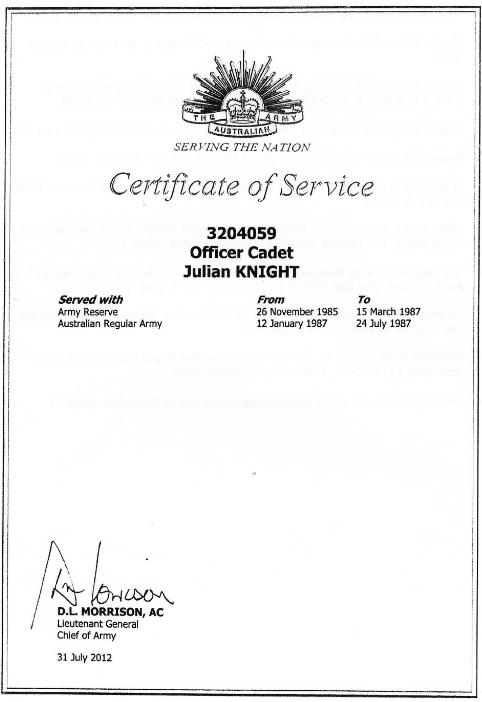
[SOURCE: Julian Knight’s Personal Account to the Australian Parliament’s Defence Abuse Response Taskforce, 2013, Attachment 1].
In Julian Knight’s own words:
RMC Duntroon
“On 12 January 1987 (at age 18), I was enlisted in the Australian Regular Army (ARA) as an officer cadet at Simpson Barracks, Watsonia.
The following day I arrived at RMC, Duntroon (by Army chartered bus), with the rest of the civilian entrants from Victoria.
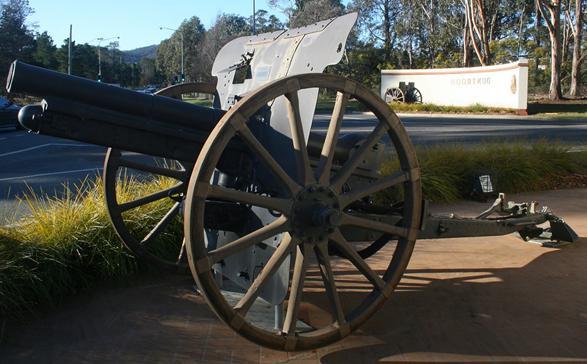
I was one of around 130 3rd Class Staff Cadets in the January 1987 intake, all of whom were aged between 18 and 25. At the time I entered RMC there were around 300 senior cadets (1st Class & 2nd Class) there. [* The 18-month course at Duntroon was divided into three 6-month “classes” as opposed to the two 6 month “classes” of the 12-month course at the Officer Cadet School, Portsea, that it replaced].
I once asked a 1st Class cadet in Kokoda Company, Corporal Gavan CARTER (CSC No 4939) – the last officer cadet from OCS to graduate -“Was Portsea was anything like this [Duntroon]?” He instantly, and almost contemptuously, replied, “Portsea was nothing like this!” I must add that I found Corporal CARTER to be the most approachable of all the senior cadets encountered at Duntroon]
- The Commandant of RMC was Major-General Murray BLAKE
- The Director of Military Art (DMA) was Colonel Rodney EARLE
- The Commanding Officer (CO) of the Corps of Staff Cadets (CSC) was Lieutenant-Colonel David KIBBEY
- The Chief Instructor (CI) of the Military Training Wing (MTW) was Lieutenant-Colonel Simon WILLIS
- The RMC Regimental Sergeant Major (RSM) was WOl J.W. BURNS
- The Officer Commanding (OC) of Kokoda Company was Major Todd VERCOE
- The ARA Kokoda Company Drill Sergeant was Sergeant C.A. JORGENSON
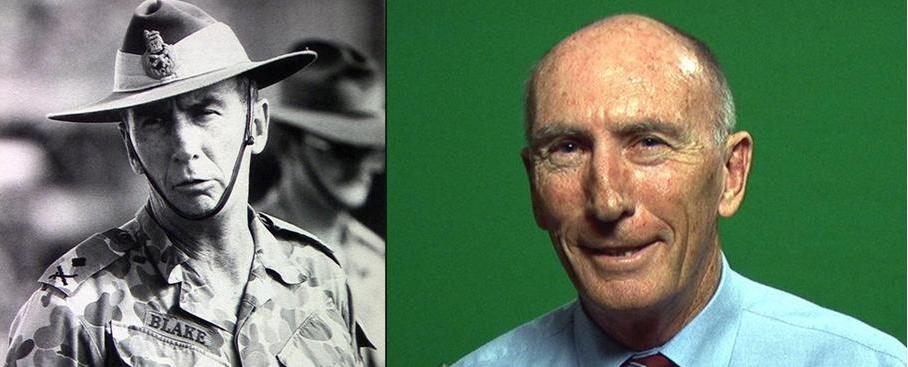
In January 1987, there were approximately 450 cadets at RMC Duntroon, divided into five companies (Alamein, Kapyong, Long Tan, Gallipoli and Kokoda). I was given the Corps of Staff Cadets (CSC) number 5266 and I was assigned to 45 Section, 15 Platoon, Kokoda Company.
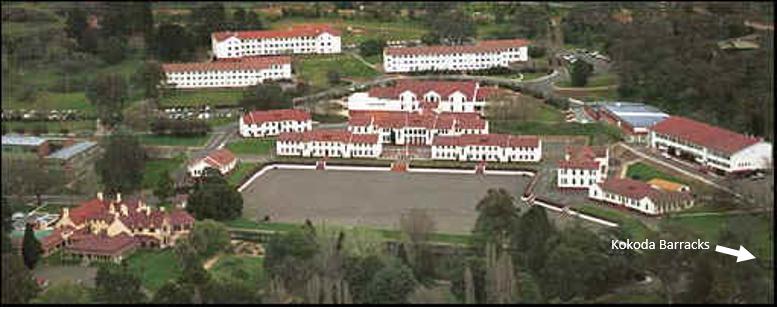
Kokoda Company at that time was housed in ANZAC Block in the northeast corner of the college grounds. Kokoda 3rd Company consisted of 78 cadets (of which 27 were Class “junior” cadets) divided into three platoons (#13 , #14 & #15 Platoons).
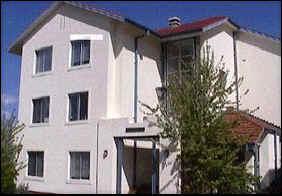
The majority of senior cadets were ADFA graduates who had started their officer training at the “old” Duntroon.
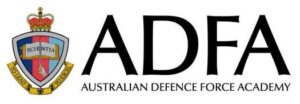
The following is the official RMC list of Officer Staff Cadets enrolled between January and July 1987.
 Loading...
Loading...
My first week at RMC was spent at the college being issued uniforms, equipment and textbooks, receiving inoculations and being medically assessed, and undergoing other induction procedures. The next four weeks (17 January-9 February 1987) were spent undergoing Initial Corps Training (ICT) at the nearby Majura Field Firing Range, a 3,035 hectare site adjacent to the Canberra airport about 10km from the college.
Initial Corps Training
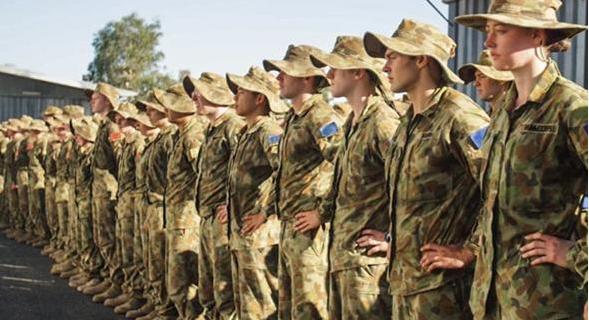
By the third week at Majura I had become somewhat estranged from the 11 other 3rd Class cadets in my section. The initial cause of the estrangement was my own immature larrikinism (tolerable in a trooper but not acceptable in an officer) which I displayed by asking facetious questions and making “smartarse” remarks.
For instance, I responded to a number of tactical battlefield problems by suggesting the use of a “human wave attack”. The final occasion I made this remark, after a section-level attack across open ground into a tree line, the rest of the section broke into suppressed laughter. Our section instructor, Sergeant Kim HOGAN angrily responded by snapping:
“Shut your fuckin’ mouth, Knight!”
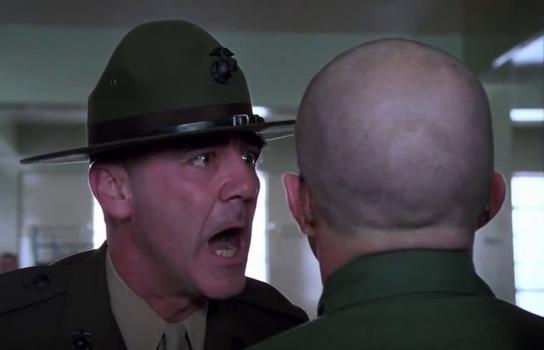
These type of comments drew the approbation of some of the instructors but particularly Sergeant HOGAN, who appeared to take an instant dislike to me due to my Army Reserve background (I never mentioned my previous Army Reserve service, but it was immediately apparent from my seven digit regimental number (3204059). Regular Army enlistees had just six digit regimental numbers).
His dislike was apparent in his repeated unprovoked disparaging remarks in front of the other cadets regarding my Army Reserve background. In a hierarchical, competitive environment like RMC, such comments tended to be instinctively adopted by your peers, much like children in a playground. This occurred less in your presence, than behind your back. When such comments and put-downs become universally accepted the result was that your reputation overshadowed your actual performance.
The most disheartening comment concerning myself occurred around the third week at Majura. I was told in confidence by one member of my section that another member of the section had said to the section, when I was absent, that I was “trouble” and was “bringing the section down.” My isolation was apparent by the end of the ICT during the end of course concert. My section put on a skit without me – I wasn’t even told they had been rehearsing one.
Sergeant HOGAN’s first Field Report on me noted that I ‘constantly asked immature questions’ and that I ‘tried to present an image of toughness.’ He later stated to Victoria Police that:
“Staff Cadet Knight performed adequately with all weapon training, his expertise was probably above average of his peer group. … In actual training in the field in the rifle group … for example he was actually leading and he performed well.
But in the camp environment and group discussions he had a problem of peer group acceptance because he was constantly making statements about whether the Australian Army minded if officers went over to the trouble spots of the world. I picked this up fairly early with Knight and whereas sometimes this may be a settling problem I could see with Knight that this was going to be an ongoing problem. I spoke to Knight and counselled him about his attitude and interests as he expressed them. My assessment of him was recorded officially and passed on through chain of command. I particularly remember with Knight that I assessed him as being an immature person, despite his relative good performance in training”.
During the ICT, I failed the Duntroon Physical Fitness Standard (PFS) test (* The minimum standard for male cadets was ‘C’ grade, which required the completion of: a 3.2km run in under 13:45 minutes, followed by 7 complete chin-ups to a high bar, 60 sit-ups in 2 minutes, 25 complete push-ups with the requirement that the chest touch the floor between each push-up and the feet raised onto a 6inch high bench, and 40 dorsal raises). I passed my PTT (Physical Training Test), but only with a C-grade.
After a 3-day field exercise (FEX) in the Mogo State Forest, near Bateman’s Bay in southeast NSW – FEX “First Run” -we completed our ICT. Sergeant HOGAN’s final Field Report on me noted that I had improved. He rated my performance as ‘satisfactory’, noted that I displayed ‘good aggression’, and rated me as ‘2’ in relation to Group Influence. We returned to the college on 11th February 1987.

For the next three days (11-13th February 1987), we underwent further assimilation, which also involved constant and universal “bastardization” by the senior cadets in our companies. While we were in the barracks we were under the total, unsupervised control of the senior cadets. Throughout the evenings the senior cadets would inspect the uniforms and equipment of the 3rd Class cadets in their section by using constant “Show Parades”.
Show Parades in the barracks were compulsory parades where a junior cadet was required to be at a specific location at a specific time, specified by the senior cadet ordering the Show Parade, to present a uniform and/or article of equipment for individual inspection. An example of a Show Parade order would be the following: “Staff Cadet Knight, Show Parade your parade belt, your parade boots, your parade uniform and your rifle outside my room at 2130hrs.”
These Show Parades could be given to junior cadets by senior cadets in addition to Extra Drills (EDs) which involved extra drill with a rifle on the main parade ground – Defaulters Parades -which involved being marched around the main parade ground with full pack, webbing and rifle at 0625hrs and again at 1710hrs -and Check Parades -where a defaulter’s attendance was checked at the college Battalion HQ. Show Parades were a constant for all junior cadets during the evenings leading up to the Lanyard Parade.
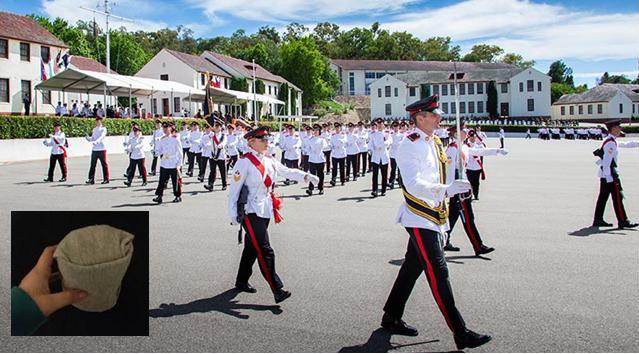
During this assimilation period, all junior cadets were required to observe a number of formalities. Whenever a senior cadet entered a junior cadet’s room, the junior cadet was required to stand to attention. Whenever a junior cadet passed a senior cadet in a hallway or on a footpath, the junior cadet was required to come to attention and say, “Excuse me, please” followed by the cadet’s rank. The same requirement applied whenever a junior cadet wished to enter a senior cadet’s room or to talk to a senior cadet or was called over by a senior cadet. A junior cadet was required to end all conversations with a senior cadet with the same “Excuse me, please” followed by the cadet’s rank.
On Friday 13 February 1987, the eve of the 3rd Class Lanyard Parade, all the 3rd Class cadets were given a test on the history and organization of the college. Those that passed the test, and only a very few did, were permitted to leave the college on local leave that night. The remainder, of which I was one, were confined to barracks to prepare for the Lanyard Parade. In Kokoda Company’s 15 Platoon, Show Parades to senior cadets commenced at around 1900hrs and continued at regular intervals of 10-15 minutes until 2300hrs.
At this point most of the 1st and 2nd Class cadets retired for the night and dispensed with ordering further Show Parades. One 2nd Class Cadet in 15 Platoon, Staff Cadet Dale BURNSIDE (CSC No 4775 -one of the senior cadets who had been at the “old” Duntroon), continued giving me Show Parades until 0200hrs; the last one he conducted from his bed. This was despite RMC Standing Orders proclaiming that ‘all cadets are to be left in privacy between 2200hrs and Reveille’ (CSC Standing Order 1304h). Reveille was at 0615hrs, although most junior cadets arose between 0530-0600hrs in order to get a head start with their duties and uniform preparation.
Lanyard Parade
On Saturday 14 February 1987, the entire 3rd Class participated in the so-called Lanyard Parade, which formally recognized our acceptance into the college.
Following this parade the universal “bastardization” of 3rd Class cadets generally tapered off.
By the end of the month only certain selected junior cadets were still being ‘bastardised’ on a regular basis. I was one of those select junior cadets. The reason for being targeted were unknown, especially given the fact that the worst offenders often had no experience of the junior cadet they targeted (i.e. they were in different platoons’ or even different companies).
One explanation is that one senior cadet took a dislike to a particular junior cadet – for whatever reason then “spread the word” to other senior cadets. My main tormenters in Kokoda Company were 1st Class Cadets who were not even in my platoon; they were at Company HQ or in 13 and 14 Platoons, located in the other half of ANZAC Block. I have attached photocopies of the Kokoda Company group photographs that appeared in the June 1987 edition of the “Journal of the Royal Military College Duniroon”, at pages 31-32. (Attachment 3).
Daily Routine
The daily routine at Duntroon was the following:
| Times | Activities | Editor’s Experience |
| 0615 | Reveille (by a nominated 3rd Class cadet standing in the hallway of the barracks quarters shouting “Reveille Reveille Reveille’ with their bed sheet over their right shoulder.
|
Belittling |
| 0625-0655 | 1st Defaulters Parade | Senior cadets used this time to intimidate junior 3rd class cadets regarding their demeanour or quarters presentation
|
| 0645-0730 | Breakfast (in the Duntroon officer cadet mess) | This time was reduced to just 10 minutes by the time of marching to and fro and being intercepted by senior cadets for intimidation
|
| 0715 | Sick Parade (at Military 5 Camp Hospital) |
|
| 0730 | Form-Up for CSC Administrative Parade | Inspections of uniform presentation of by senior cadets of junior 3rd Class cadets – an opportunity to pedantically issue
‘Show Parade’ penalties (a means of bullying and indoctrination).
|
| 0750-0810 | CSC Administrative Parade | Toy soldier marching stuff |
| 0820-1040 | Lectures/Training | |
| 1040-1100 | Morning Tea | 5 minutes if you were lucky |
| 1100-1230 | Lectures/Training | |
| 1230-1310 | Lunch (in the Duntroon officer cadet mess) | 10 minutes if you were lucky |
| 1310-1320 | CSC Mess Parade | |
| 1330-1640 | Lectures/Training | |
| 1700-1800 | Retreat (retire to barracks) | Senior cadets used this time to intimidate junior 3rd class cadets regarding their demeanour or quarters presentation
|
| 1710-1740 | 2nd Defaulters Parade | |
| 1800-1845 | Dinner (in the Duntroon officer cadet mess) | |
| 1850 | 1st Defaulters Check Parade | |
| 1930-2130 | Evening Lectures | |
| 2140 | 2nd Defaulters Check Parade | |
| 2200 | Tattoo (retire to quarters) | Senior cadets used this time to intimidate and bastardise junior 3rd class cadets in the company barracks
|
| 2230 | Lights Out | Typically, 3rd class cadets would stay up till 1am or later in order to prepare their uniform for parades (formal and defaulters).
This meant that many were so tired each day as to not pay attention or fall asleep during lectures, then consequently fail testing on the subjects and also attract more penalty show parades. It became a slippery slope for many.
|
The daily routine began with Reveille at 0615hrs. At Reveille the 3rd Class cadets in 15 Platoon were initially required to stand in their doorways at attention with the bottom sheet of their bed slung over their right shoulder.
They were then required to yell in unison “Reveille! Reveille! Reveille!”
This requirement was dispensed with after a few days. Junior cadets then mostly arose between 0530-0600hrs in order to get a head start with their duties and uniform preparation. After a few weeks, however, the senior cadets in 15 Platoon invented an order that no 3rd Class cadet was permitted to leave his or her room before 0615hrs, otherwise they would be charged with “disobeying a lawful order”.
The stated justification for this new order was that junior cadets moving around the barracks were apparently disturbing the ‘beauty sleep’ of the senior cadets.”
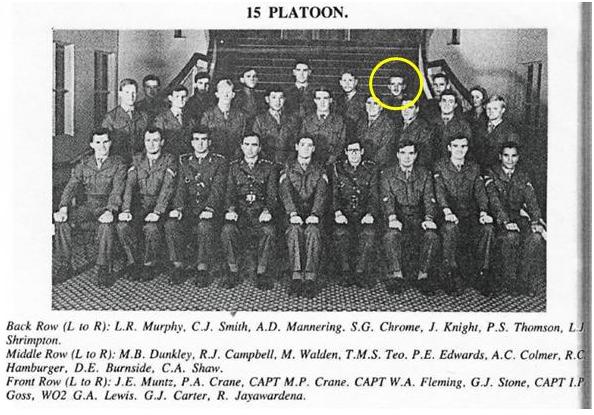
[SOURCE: The above is an extract in a series of Julian KNIGHT’s records as part of his 97-page ‘Personal Account’ of his 6-month relentless persecution at RMC Duntroon submitted to the Defence Abuse Response Taskforce dated 26 November 2013, pp. 8-14].
